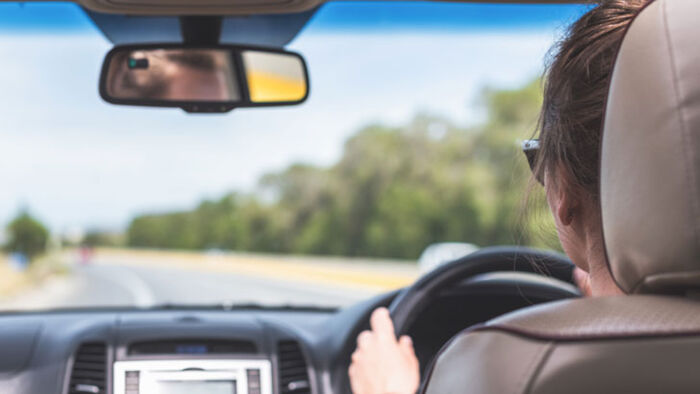Can pay as you drive car insurance save you money?
By Tom Watson
It might not come as a surprise, but Australia is home to almost as many vehicles as people, with the Australian Bureau of Statistics reporting that there was a touch over 20 million registered vehicles across the country in January 2021.
How those vehicles are used though is, of course, very different.
Many Australians rely on their cars to get to and from work every day, or to actually conduct their work. On the other hand, plenty of people barely drive at all, largely leaving their vehicles parked in the garage aside from a quick jaunt to the shops or a weekend trip away.
For car owners who do drive less frequently, there's been relatively little flexibility when it comes to the car insurance available to them.
But that's starting to change, with dedicated usage-based or 'pay as you drive' options beginning to pop up which typically offer cheaper cover to infrequent drivers than regular comprehensive policies.
For Sydney driver Giselle Nguyen, who works from home most days and typically only uses her car for school drop off and pick up, the urge to find a better-fitting insurance option came about when she noticed how little she was using her car during the pandemic.
"I think after last year's round of lockdowns, when the car was definitely used even less, made me realise that my insurance was almost useless because my car was just sitting there," she says.
"And then my premium actually went up quite a bit which kind of annoyed me, because I knew that I'd be paying for something that I had even less chance of using than before, so I definitely wanted to find something a lot cheaper."
Nguyen has since made the move over to a pay as you drive policy with a different insurer which, she says, has her track to significantly reduce her premium costs for the year.
"I switched over to KOBA in February. Because of how it works there's an upfront fee, and then each month there's a cost on a per kilometer basis. So based on that, and estimating for the year, I think it'll come out saving me around $700 - but that's how ridiculous my old quote was too."
How does pay as you drive insurance work?
As the name suggests, pay as you drive car insurance policies take into account distance driven as one of the key metrics for pricing. That means that car owners who drive less are charged less, with the logic being that they're less likely to be involved in an accident and to make a claim.
A number of insurance companies now provide options for drivers who are willing to stay below a certain distance limit, with financial comparison website Mozo currently tracking six insurers with such policies in its database.
"Comprehensive car insurance can be costly, so depending on your quote, pay as you go could be cheaper," says Mozo personal finance expert, Claire Frawley.
"Pay as you drive car insurance policies are really great for people who don't drive their car every day. Whether you commute to work by public transport or you have two cars in the household, it's a great way to only pay for the distance you are driving."
Typically, there are two ways that usage-based policies work. The most common option is for car owners to select their intended usage (e.g. 9000km/year) and pass on an odometer reading to the insurer, which is then used to calculate the premium. Drivers will need to stay below the distance limit if they want to avoid extra costs though.
The second option does away with the guesswork by using a black box or smartphone to directly feed information back to the insurer, with the distance data then used to calculate the premium. One of the only Australian providers offering pay as you drive insurance calculated with real-time data is KOBA, the insurer Nguyen switched to earlier this year.
Under KOBA's model, premium costs are split into two parts: an upfront fixed cost which covers fire, theft and third party damage while the car is parked, and a per kilometre rate which is charged each month. Andrew Wong, KOBA's chief executive, says that while it won't be the best fit for everyone, KOBA's model is geared to produce lower premiums for low-usage drivers.
"The way the math works with the pay per kilometre model is that if you drive a traditional amount of kilometres, call it 13,000km which is the national average, our policy will be more or less the same as everyone else's. So, the way that you get savings is by driving less.
"With us, you fundamentally have control. So, if we go into another lockdown, or if you're a FIFO worker, or you're lucky enough to get to go on holiday for a month, you don't pay anything because you're not driving. In that sense, you're not at risk of getting in a collision, and so we don't charge you."
The driving data trade-off
Cheaper premiums may be attractive to infrequent drivers, but there are concerns about pay as you drive policies that rely on real-time data. Among them is the range of data that is actually being tracked, and whether or not more accurate data will actually benefit drivers in the long run.
In the case of KOBA, Wong says that while the company does receive data that allows it to create a picture of how safe a driver is, the ultimate focus when it comes calculating a premium is the distance someone drives.
"Data is obviously a very sensitive topic, and we are very aware that we get some pretty interesting things. But our belief is that the data does belong to the consumer," he says.
"In the future we will have driving data that tells us about people's habits, how they drive, their safety levels and things like that. And we do calculate a safe driver score for everyone, but we don't use it to drive premium. Our premium is calculated based on the distance that you travel.
"Our hope is that things like driving behavior can be used as a way to engage consumers and make them safer, as opposed to trying to sting them for it."
While KOBA might not be planning to factor its safety score into premiums, Andrew Parton, Oceania insurtech leader and financial services technology consulting partner at Ernst & Young, says that some people may be in for a shock if there is a broader move towards using data like accelerating and braking to determine the risk of individual drivers.
"There will be winners and losers depending on what your risk is perceived to be. At the moment, with less data, you get more people lumped into an average, because the three risk factors are limited to where you live, what car you drive and how old you are.
"I may think I'm a good driver, but maybe I'm not as good as I think, or maybe I'm not as lower risk relative to others. And actually, my premium might go up, because if it's going to be based on specifics and not on an average, there's no guarantee that it will go down."
Will smart, usage-based insurance become more prevalent?
Data-driven pay as you drive insurance may be in its infancy in Australia, but there are indications from overseas that it will only continue to grow. As Parton points out, some car insurers in the United States are making it more accessible by doing away with black boxes in favour of smartphones.
"There are quite a few bits of research out there which predict fairly significant growth in usage-based insurance over the next 10-20 years, with somewhere between 20% and 30% compound annual growth. So that's quite significant.
"I think the one thing that's probably powering some of this growth is that you no longer need to go and install a physical device in the vehicle. All the major offerings from providers in the US are smartphone-based, so you just download an app and it tracks everything that it needs to track."
However, in the more distant future, Parton says that the advent of autonomous vehicles may completely change the car insurance landscape once again.
"When you don't have a human doing the driving and the safety of the vehicle is governed by the software that's in the car and whoever wrote the software, then that changes the whole perspective of motor insurance," he says.
"Even if usage-based insurance in 10 years' time doubles from where it is today, it's probably going to be superseded by the whole autonomous vehicle phenomenon anyway."
Get stories like this in our newsletters.



